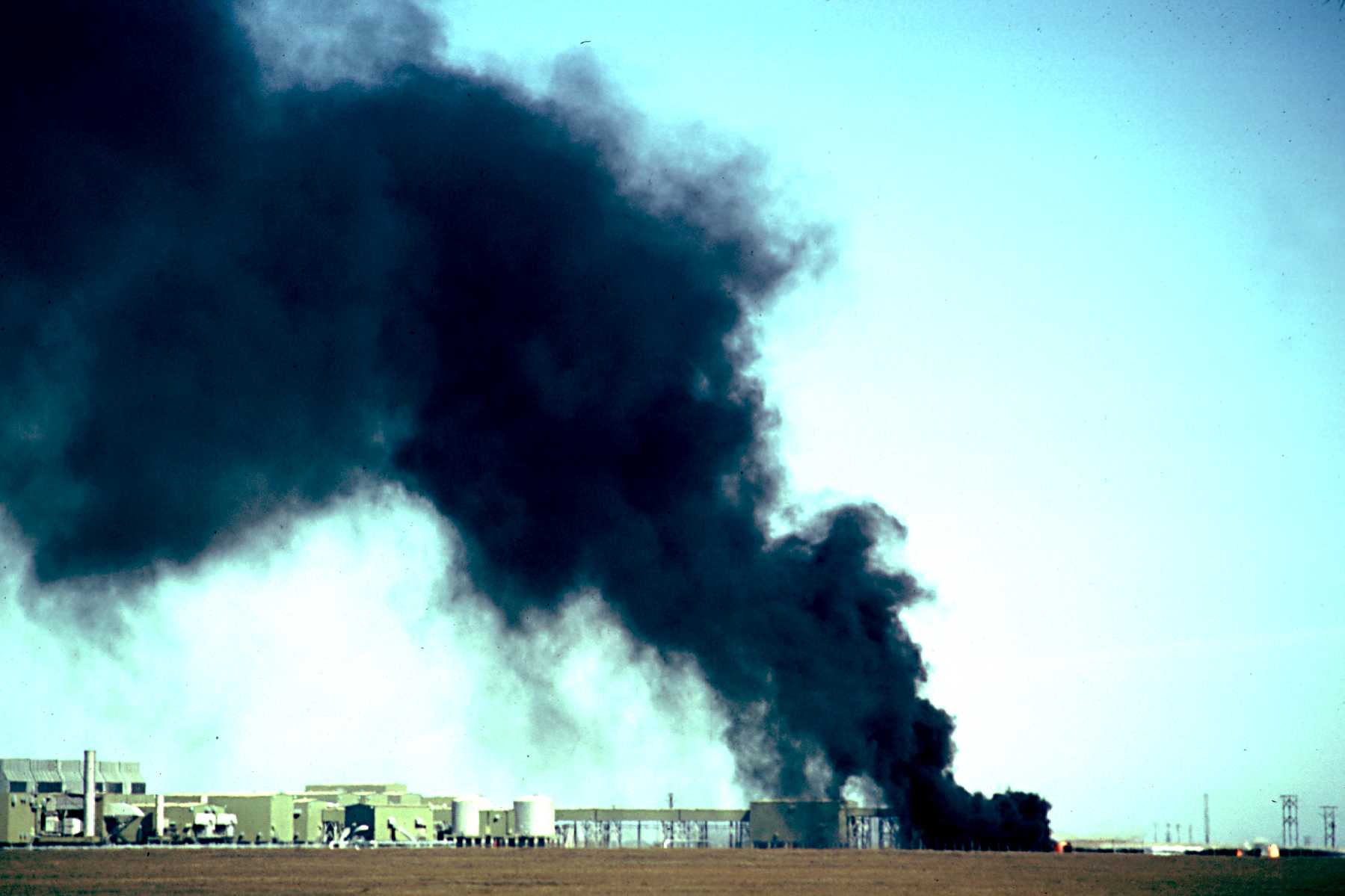
Impacts of Oil Development on Alaska's North Slope
Air Pollution
Much of the air pollution in the oil fields is generated by large stationary sources, which are permitted under state and federal air quality regulations. These emissions contribute to global warming and are so concentrated that they may endanger the health of oilfield workers.

- Nitrogen oxide emissions from Prudhoe Bay oilfields were 56,427 tons in one year (June 1994 to June 1995) according to industry reported information cited by the U.S. Army Corps of Engineers.(1) This exceeds all other Alaska sources combined by 20,000 tons and is twice the total emitted in Washington D.C.(2) This is also a severe underestimate; it does not include emissions from production facilities at Kuparuk, Alpine, Badami or Pt. McIntyre oil fields, or new projects such as Northstar.
- 11,560 tons of carbon monoxide were emitted in the same year, an amount equal to one third the production of the Municipality of Anchorage (pop. 250,000) according to the EPA.(3)
- Other measured pollutants include 1,470 tons of sulfur dioxide (SO2), 6,199 tons of particulate matter (PM) and 2,647 tons of volatile organic compounds (VOC).(4)
-
114,00 metric tons of methane and 11 million tons of carbon are emitted
each year.(5)
- The oil fields have one of the largest groupings of gas turbines in the world. Ninety-eight natural gas-fired turbines were operating as of 1988.(6)
- Hundreds of other "minor" sources that don't require a permit are not measured, but still contribute to air pollution. These include automobiles, buses, trucks, heavy equipment such as bulldozers and seismic vehicles, small incinerators, unregulated fuel tanks, jet airplanes, and fugitive dust sources such as gravel pits and road dust.
- Air pollution extends far beyond the oilfields. Prudhoe Bay emissions of nitrogen oxides and methane have been detected in Barrow, a village more than two hundred miles away.(7) Because the oil and gas industry is exempt from the toxic release inventory reporting requirements of the federal Emergency Planning and Community Right to Know Act of 1986, exact information on these air pollutants is difficult to find.
Air Quality Exclusion Zones
Under the federal Clean Air Act of 1970, the EPA set air quality standards of maximum concentrations of certain air pollutants. These standards protect human and environmental health and apply everywhere except within a private facility's boundaries (within which federal OSHA standards for workers' health apply). Rather than reduce operations, use cleaner fuels or install air pollution control technology, the oil industry has persuaded the Alaska Department of Environmental Conservation to allow them to extend the official boundaries of the polluting facilities by as much as 250 meters on each side, creating an "air quality exclusion zone." For a typical 500 square foot drill pad, this increases the area that an oil company is allowed to pollute by nearly four times, from 5.7 acres/pad to nearly 43 acres/pad.(8) Essentially, this gives the original emissions a lot more space so that by the time they have drifted to the edge of the exclusion zone, they are diluted enough to meet federal standards.
Air quality exclusion zones insulate the oil companies operating on the North Slope from any incentive to equip their emission sources with pollution control equipment. This is clearly contrary to the intent of the Clean Air Act, which was to protect public welfare and encourage industry to use the best available technology to reduce the air pollution they emit.
(1) U.S. Army Engineer District, Alaska, Draft Environmental Impact Statement Beaufort Sea Oil and Gas Development/Northstar Project, Volume III, Table 5.4-7, (June 1998).
(2) EPA Office of Air Quality Planning and Standards, Source Ranking Report for Alaska Nitrogen Dioxide Air Pollution Sources for 25 sources, http://www.epa.gov:6703/airwdcd/ow, (August 21,1998).
(3) EPA AIRSWeb, Source Ranking Report Alaska Carbon Monoxide Air Pollution Sources, http://www.epa.gov:6703/airwdcd/ow (August 21,1998)
(4) U.S. Army Engineer District, Alaska, Draft Environmental Impact Statement Beaufort Sea Oil and Gas Development/Northstar Project,), Volume III, Table 5.4-7 (June 1998).
(5) Jaffe, D.A., R.E. Honrath, D. Furness, T.J. Conway, E. Dlugokencky, and L.P. Steele. A determination of the CH4, NOx, and CO2 emissions from the Prudhoe Bay, Alaska oil development. Journal of Atmospheric Chemistry 20: 213-227 (1995).
(6) State of Alaska, Department of Environmental Conservation, Oil and Gas Waste Management Issue and Recommendations for the Arctic National Wildlife Refuge, Appendix I, p. 59 (1990).
(7) Jaffe, D.A., R.E. Honrath, D. Furness, T.J. Conway, E. Dlugokencky, and L.P. Steele, "A determination of the CH4, NOx, and CO2 emissions from the Prudhoe Bay, Alaska Oil Development," J. Atm. Chem., 20:213-227 (1995); Radian Corporation, Air Toxics Technical Assistance for the State of Alaska, Final Report, (March 1987).
(8) DEC Air Quality Construction Permit No. 9973-AC015, section B.11.a-b, at 3.
Trustees for Alaska
1026 W. 4th Ave., Suite 201
Anchorage, AK 99501
V:(907) 276-4244 F: (907) 276-7110